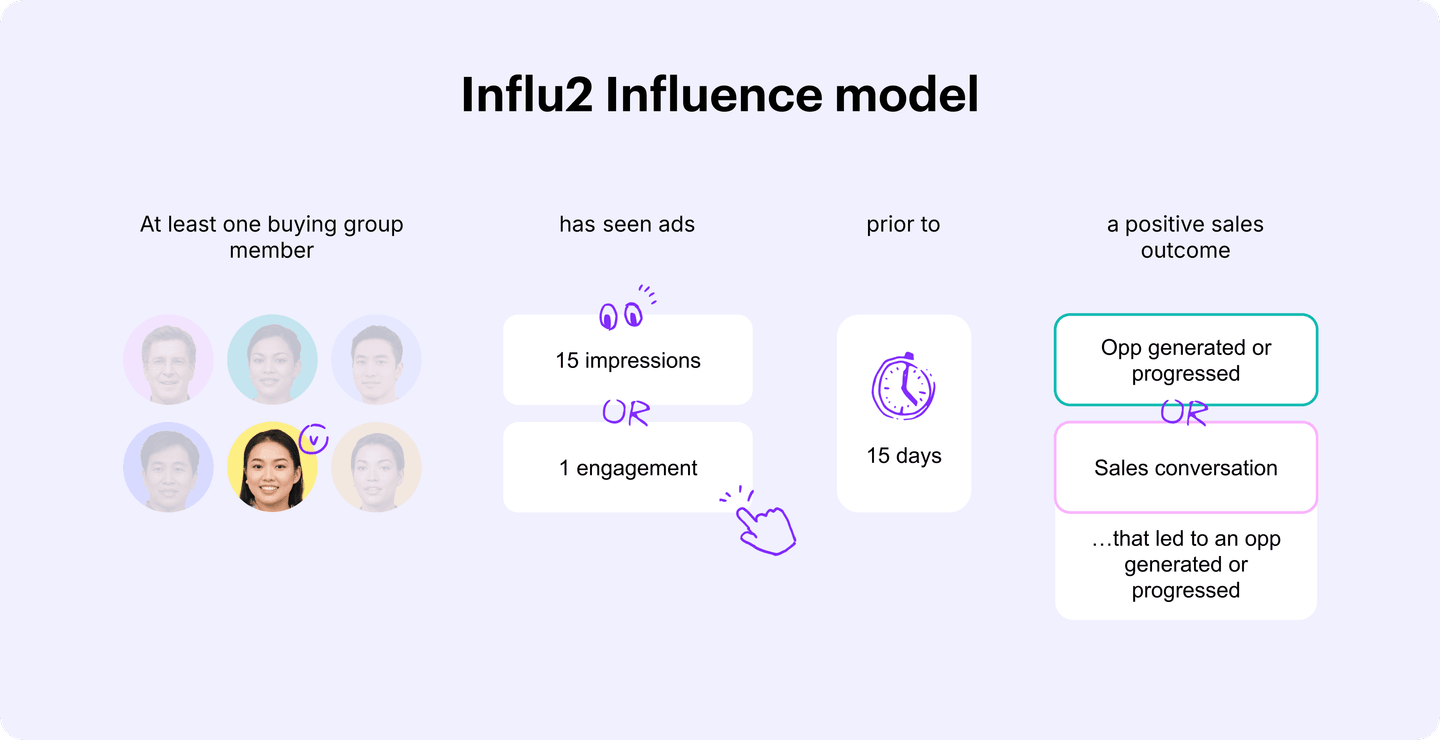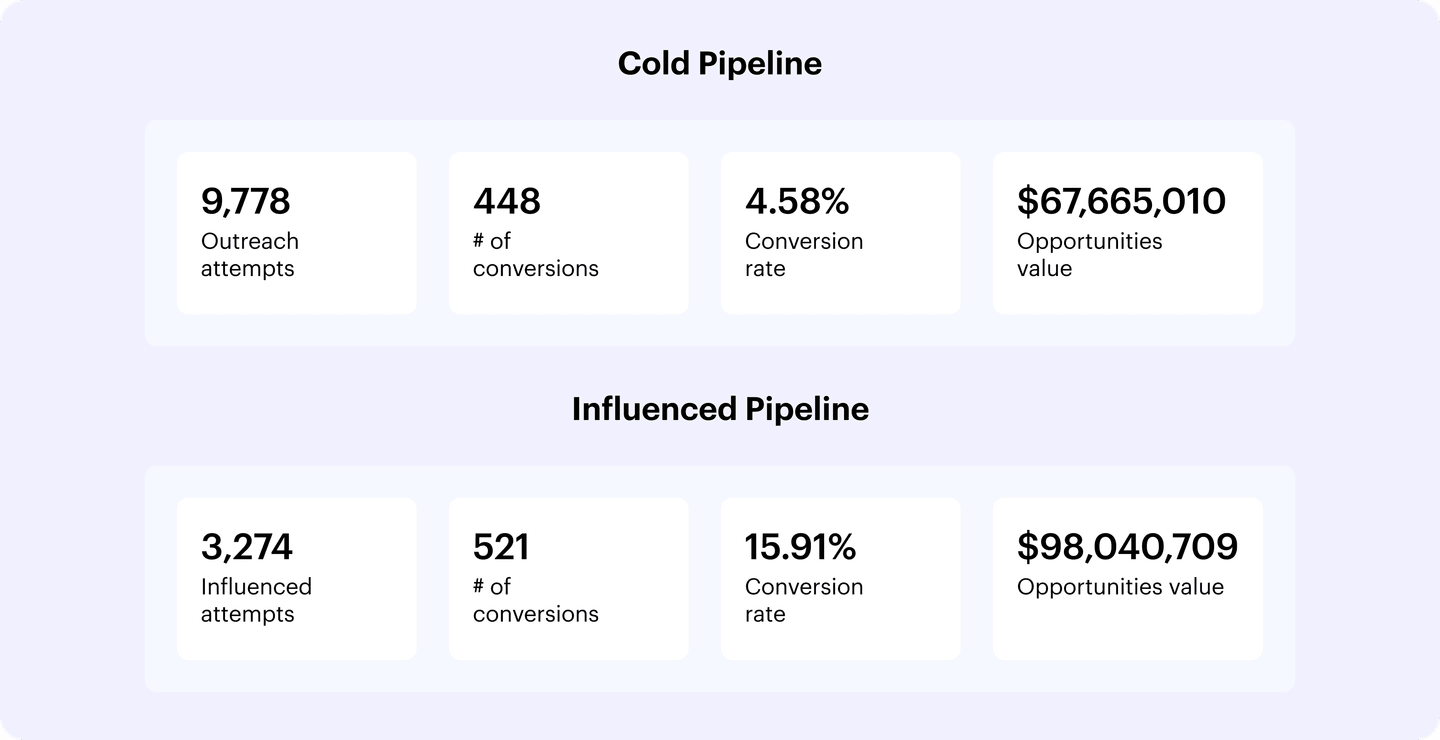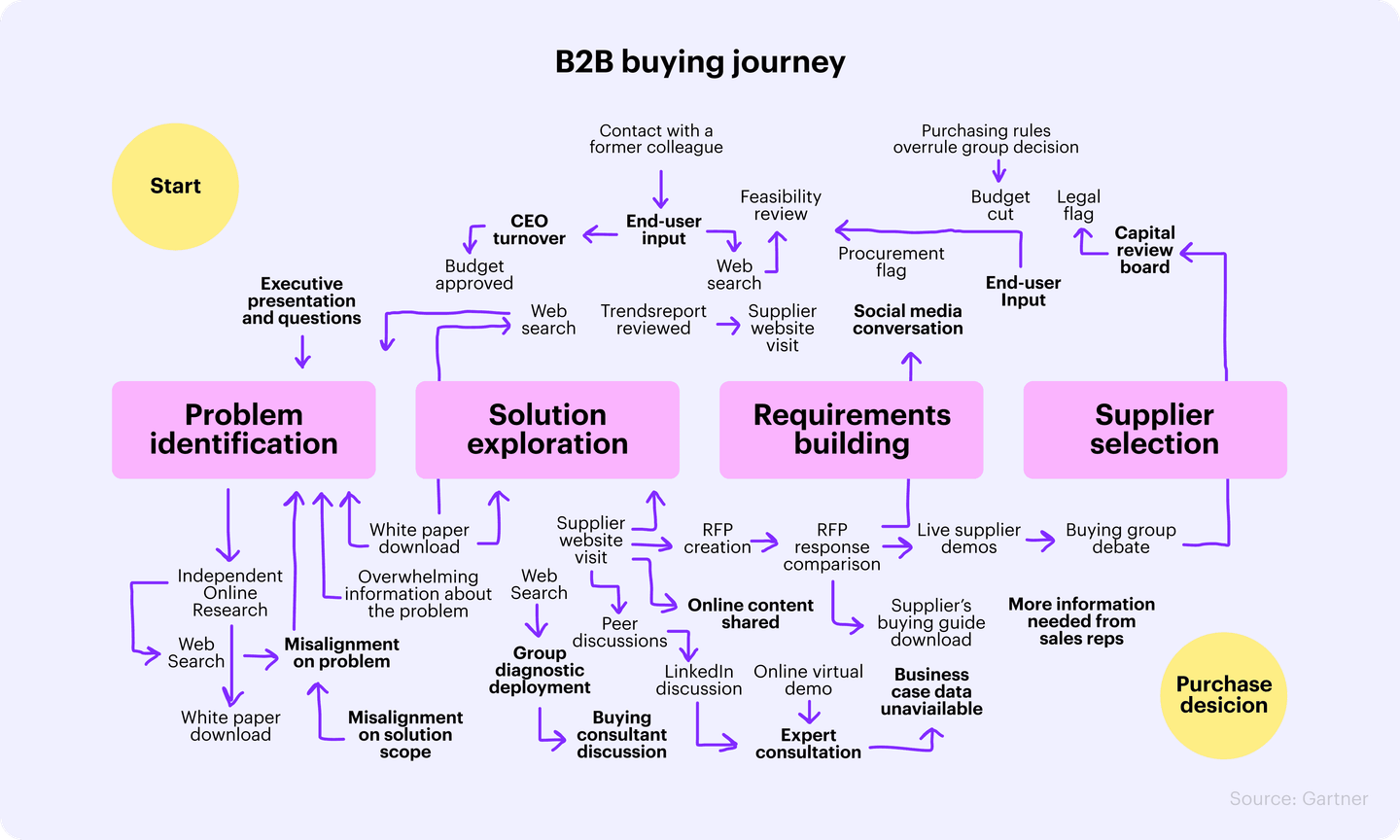Why It's Time to Rethink Account-Based Marketing Attribution
Budgets are shrinking, spend is being monitored more closely, and marketers are being asked to quantify the results of their ABM programs.
Unless marketers can prove their impact on growth goals with hard numbers, budgets will continue to be cut.
But traditional account-based marketing attribution models don’t tell the full story.
It's tough to understand what’s working when you’re limited to the data your ABM tools allow you to measure.
The answer?
Re-think attribution’s place in ABM reporting altogether.
Why attribution alone isn’t enough for ABM
Attribution credits specific marketing activities with a conversion.
For example, you run a LinkedIn ad targeting a specific account. Someone clicks the ad, fills out a form to download your lead-gen asset, and eventually becomes a customer.
Attribution would give credit to the ad for that conversion.
Makes sense in theory, but B2B buying journeys are rarely that simple.
Attribution gets murky and less reliable once multiple touchpoints and decision-makers are involved, which is the case for ABM.
Let’s take that previous example, and imagine the prospect saw your ad, clicked it, but didn’t fill out a form. There's no conversion point, so attribution doesn’t track it.
A couple of days later, that prospect is talking with a co-worker—someone else who’s part of your buying committee—and they mention your product.
The co-worker Googles your brand and spends a few minutes browsing your website. They don’t fill out any forms, so, again, there is no conversion point for attribution to track.
Sales, meanwhile, has this prospect in their sights, and their outbound email sequence leads to a scheduled call. This turns into a demo and, eventually, a closed deal. Attribution credits the revenue generated purely to the sales call.
Clearly, that’s not an accurate representation of what influenced that customer to buy.
Yes, the sales call definitely had a big impact, but is it 100% responsible for the conversion?
Most marketers would say no.
They’d say that:
- The ad is what kicked off the buying journey to begin with
- The copy on the website pre-resolved some sales objections
But since attribution doesn’t account for this, marketing’s involvement would go untracked.
You can solve that problem by measuring influence instead of focusing on attribution.
How influence captures what ABM attribution misses
At a high level, influence measures all the factors that impact a prospect’s decision to move forward in the buying journey, not just the conversion points.
But if a person doesn’t fill out a form, how do you know if your marketing efforts influenced a deal?
You set qualifiers for what’s considered influence.
Here’s a quick example of what that looks like for ads.

- Target prospect. The person who saw or engaged with the ad needs to be a member of the buying group within the account you’re targeting.
- Intent. The person must have seen your ads at least 15 times or clicked at least once.
- Window of time. The engagement needs to happen within 15 days of a positive sales outcome.
- Positive sales outcome. There has to have been an opportunity generated or progressed, or a sales conversion opened that led to a new or advanced opportunity.
With these qualifiers checked off, you know your ads have influenced a deal.
You can also quantify the impact of your ads by comparing the results of cold pipeline (converted accounts not targeted by your ads) against influenced pipeline (converted accounts that were targeted with ads).
For instance, in the screenshot below you can see that cold accounts for this company convert to pipeline at 4.58%, while influenced accounts converted at 15.91% (a 247% conversion boost).

Beyond that, you can also see how much additional revenue your ads influenced by comparing the conversion rate of cold pipeline to the conversion rate of influenced pipeline.
Let’s say your conversion rate for cold pipeline is 2% and the conversion rate for influenced pipeline is 3%.
Now, imagine that your amount of influenced pipeline is $15,000,000.
With a cold conversion rate of 2%, you would have only generated $10,000,000.
So, with a conversion rate of 3% instead of 2%, you have an additional $5,000,000 in created pipeline that you couldn't have generated without ads.
Why measuring influence makes more sense than ABM attribution
As a model for measuring the impact of your account-based marketing activities, influence often gives you more accurate data than attribution.
Here’s why.
ABM buying processes are complex
Those linear funnels we learned about in sales and marketing 101?
They don’t reflect what B2B buyers actually go through.
In reality, the typical B2B buying journey looks more like this:

Prospects don’t move linearly through awareness>consideration>decision content. They move dynamically through that “funnel,” consuming MOFU content one day and a TOFU piece the next.
There are tons of touchpoints happening across different channels and tactics.
Also remember that ABM programs involve several decision-makers, each on their own buying journey (and not all moving at the same pace).
You can start to see why attribution’s conversion-based approach isn’t equipped to give you a clear understanding of what’s working and what isn’t.
ABM requires cross-team buy-in
You don’t just need to prove the value of your spending to executive leadership. You also need buy-in from your partners in sales.
After all, both teams are targeting the same accounts and buying groups (at least they should be). You need to be fully aligned, or else you’re going to create a disjointed buying experience.
If Sales doesn’t believe that your ads are influencing deals—or, worse, that they’re driving poor quality leads—it makes it more difficult to get them bought into your program.
Measuring influence makes it easier to demonstrate the value of your activities to sales.
You can show the boost from the ads you run (as highlighted earlier), and Sales will actually want you to run ads to help win deals.
Measuring attribution does the opposite.
It usually leads to marketing optimizing for what they can measure, which is lead generation (ebook downloads, webinar signups, and demo requests from people who may or may not fit your ICP), rather than pipeline and revenue.
ABM brings with it a higher CAC
As budgets are shrinking and marketers are under increasing pressure to prove the impact of their investment, ABM especially is in the firing line.
That’s because ABM is expensive.
You invest a lot of resources going after specific accounts, setting up targeted outreach campaigns, running ads, and even creating personalized gifts and merch.
Knowing what influenced each prospect within a target account to ultimately move forward in the sales process is super important.
Influence allows marketers to say “This program influenced the prospect's decision to say yes.”
Moving from ABM attribution to influenced pipeline and revenue
Attribution has its place, but it doesn't measure the full impact of ABM programs.
If you want to paint a clearer picture of what’s working and show your revenue influence, let’s talk.
Or, if you want to learn more about how we measure influence here at Influ2, check out this article.
Dominique Jackson is a Content Marketer Manager at Influ2. Over the past 10 years, he has worked with startups and enterprise B2B SaaS companies to boost pipeline and revenue through strategic content initiatives.


